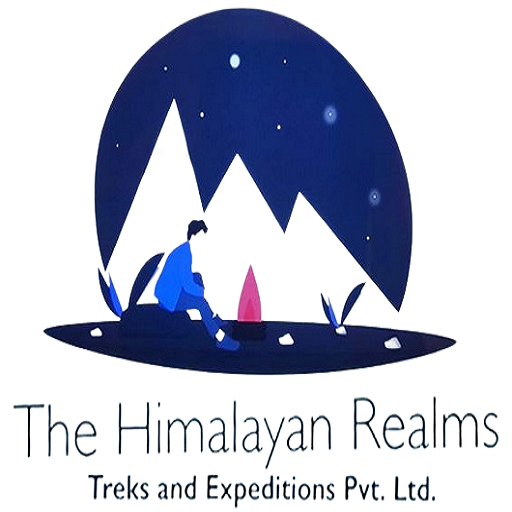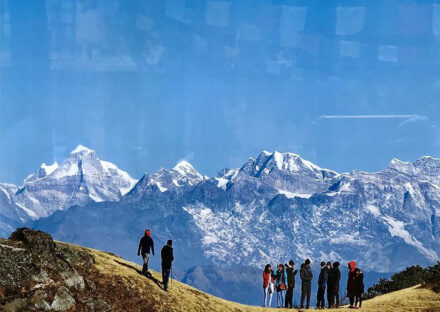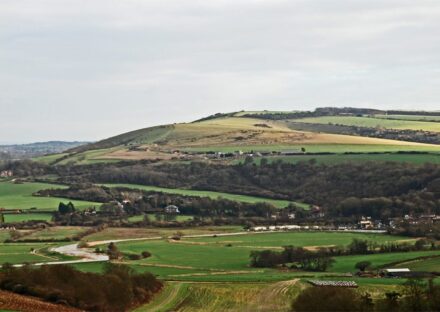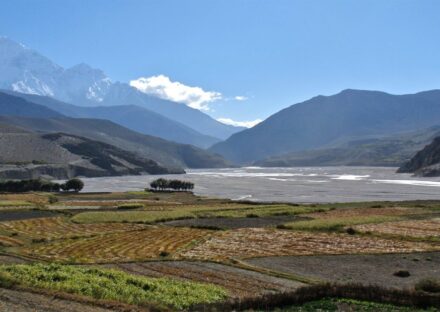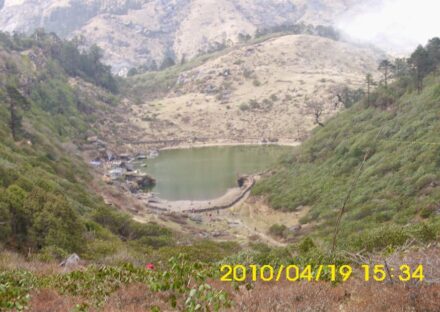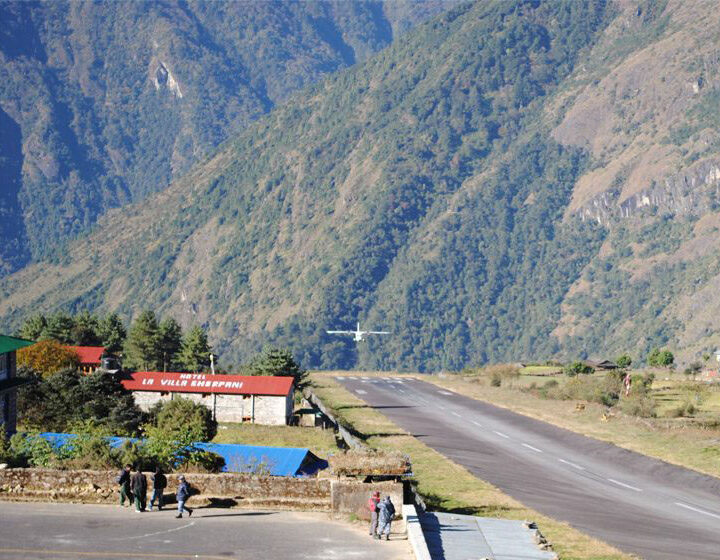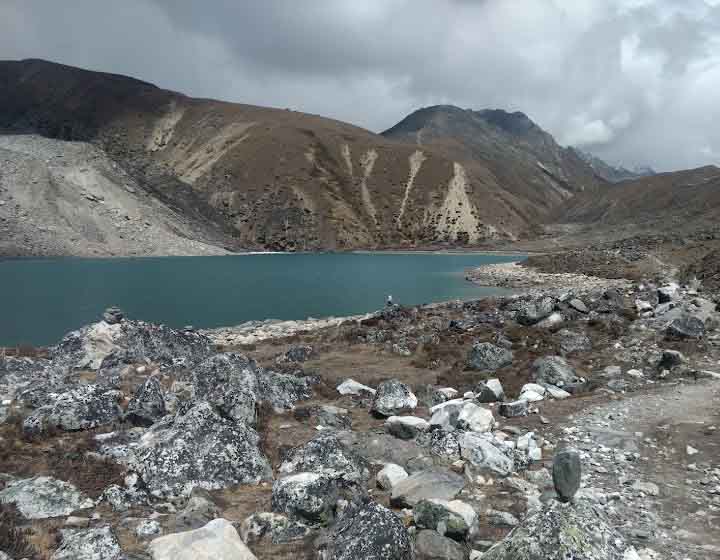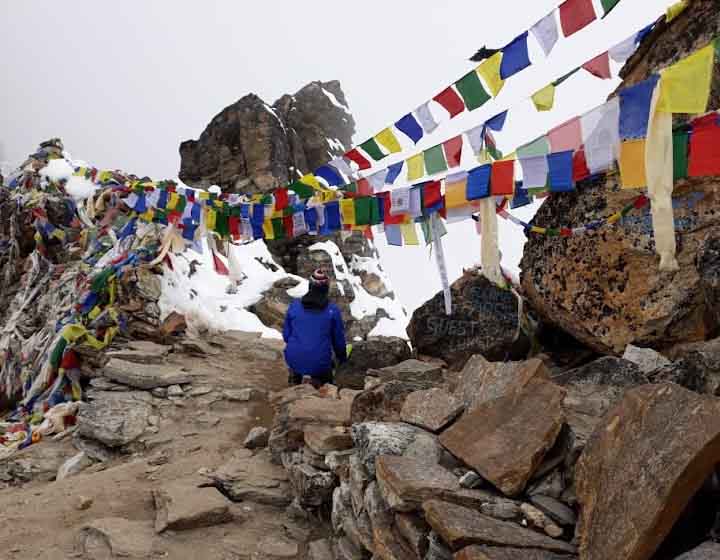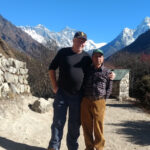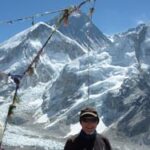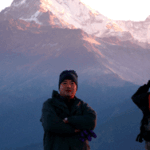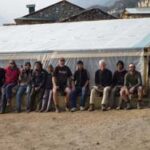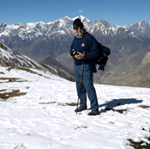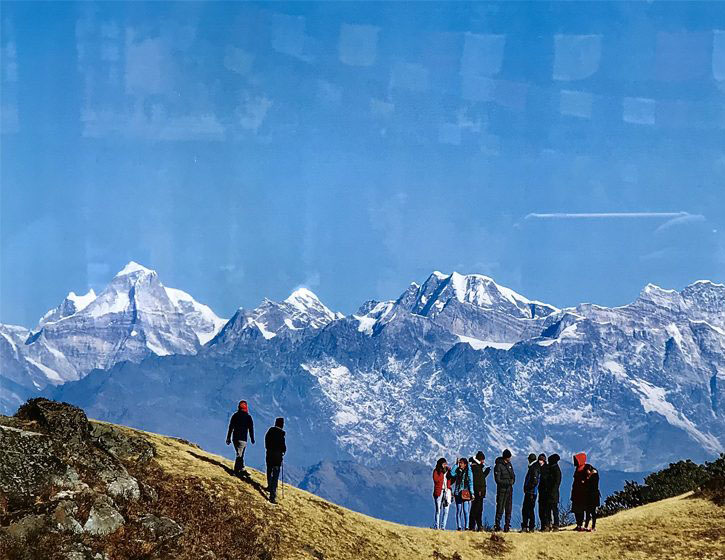
Trip overview

Makalu Arun Valley Trek is a really non-touristy trekking trail in Nepal. The Makalu arun valley trek is located in between the Sagarmatha(Mt. Everest) and Makalu-Barun National Park. The Makalu arun valley trek is offers superb Himalayan scenery including the Mount Everest, Mt. Makalu, Mt.Baruntse, Mt.Lhotse, Mt.Nuptse, Mt. Amadablam, Mt.Thamserku.
There are more than 650 species of birds and over 800 species of butterflies, a shelter of the rare and endangered Panda. Orchids and other flowers are along the faint jungle trail, swirl prayer flags at Shipton La… pass is Walking through this picturesque. Sherpa villages are the attraction of the Makalu arun valley region. Makalu arun valley trek is an incredible diversity of natural beauty and culture. Trekking in the Makalu arun valley is provides an alternative approach to the Khumbu region trekking.Makalu at 8481m. is the fifth highest mountain the world and lies on the Nepal – Tibet border. The extensive views of all major peaks, East of Everest are the main highlights of this fascinating trek. Seldom traveled the terrain make an approach to Makalu on foot centers around the Arun Valley.
Makalu Arunvalley trek the Arun River rises in Tibet and consists of snowmelt waters from the northern flanks of the Everest and Kanchenjunga. Before it breaks through the Himalayan chain at a height of only 1200m. 35km. East of the Makalu. Makalu Arun Valley trek requires endurance and fitness to fully appreciate the beauty of the Arun valley region. Makalu arun valley trek requires stamina and fitness to fully appreciate the beauty of the region. It provides some outstanding mountain views.
Main highlight:-
1. Stunning Views of Himalayan Peaks
Panoramic views of Mount Everest, Makalu, Lhotse, and other towering peaks of the Mahalangur range. Beautiful vistas of the Kanchenjunga range in the distance.
2. Arun River and Scenic Valleys
The trek follows the picturesque Arun River, one of the largest rivers in Nepal, surrounded by lush greenery. The valley is renowned for its pristine natural beauty, with diverse landscapes ranging from low-altitude farmland to high-altitude alpine meadows.
3. Biodiversity
The trek passes through the Makalu-Barun National Park, known for its rich biodiversity. A chance to encounter rare wildlife, including the red panda, snow leopard, Himalayan black bear, and exotic bird species.
4. Cultural Experience
The Arun Valley is home to various ethnic communities, including the Sherpas, Rais, Limbus, and Tamangs. You can explore traditional villages, observe local lifestyles, and experience warm hospitality.
Atmosphere & Landscape
The trek takes you through tropical forests, lush valleys, and high-altitude glaciers. The Arun River Valley is deeply carved, providing dramatic scenery with hanging cliffs and waterfalls. As you ascend, you will experience diverse ecosystems, from warm subtropical zones to freezing high-altitude conditions. Remote villages inhabited by Sherpa, Rai, and Limbu communities give trekkers a cultural insight into traditional mountain lifestyles.
Flora
The trek passes through multiple vegetation zones, each with its own unique plant life: Lower regions (500m–2,000m): Dense subtropical forests with rhododendron, bamboo, and Sal trees. Mid-altitude (2,000m–3,500m): Temperate forests with oak, pine, fir, and juniper. Higher regions (3,500m+): Alpine meadows and shrubs, where only tough plants like mosses and lichens survive In spring (March–May), the rhododendrons bloom in vibrant red, pink, and white, making the trek especially picturesque.
Fauna
Makalu Barun National Park is home to diverse wildlife, including rare and endangered species: Mammals: Red panda, snow leopard, Himalayan tahr, Assamese macaque, and musk deer. Birds: Over 400 species including the Himalayan monal (Nepal’s national bird), blood pheasants, and sunbirds. Reptiles & Amphibians: Himalayan pit vipers, frogs, and salamanders.
Fun Aspects of the Trek- Remote Adventure: The trail is far less crowded than Everest or Annapurna treks, giving a sense of true wilderness. Cultural Encounters: Experience the unique traditions of Sherpa, Rai, and Limbu communities. Diverse Terrain: Trek through dense forests, cross roaring rivers, and climb high passes like Sherpani Col for a thrilling experience. Wildlife Spotting: If you’re lucky, you might catch a glimpse of rare Himalayan species in their natural habitat. Stunning Mountain Views: Enjoy panoramic views of Makalu, Everest, Lhotse, and Chamlang.
5. Off-the-Beaten-Path
Unlike the more popular Everest or Annapurna treks, the Arun Valley trek is relatively less crowded, offering solitude and a closer connection to nature.
6. Challenging yet Rewarding Trails
The trek involves diverse terrain, including steep ascents, descents, suspension bridges, and dense forests, making it suitable for trekkers seeking a moderate challenge. Spectacular sunrise and sunset views from various vantage points.
7. Barun Valley
A hidden gem of the trek, the Barun Valley is an untouched paradise with stunning waterfalls, glacial rivers, and lush vegetation.
Side trips
Makalu Base Camp (4,870m)-The ultimate side trip for those wanting to get up close to Mount Makalu (8,485m). Offers stunning views of Everest, Lhotse, and Baruntse. Witness the dramatic contrast between lush green forests and the barren high-altitude landscape.
Barun Valley Exploration- A hidden paradise inside Makalu Barun National Park. Known for pristine waterfalls, deep gorges, and exotic flora (especially in spring). Home to rare wildlife like red pandas and snow leopards.
Khongma La & Shipton La (4,200m – 4,220m) A high-altitude pass with 360-degree mountain views. Perfect for those seeking a challenging yet rewarding side trek. Named after Eric Shipton, the famous British mountaineer.
Salpa Pokhari & Salpa Pass (3,349m)- A sacred alpine lake important to Hindu and Buddhist pilgrims. Salpa Pass offers breathtaking views of the Arun Valley. A less-traveled but scenic detour. Chichila & Num Village- Traditional Sherpa and Rai settlements with unique culture and hospitality. Experience authentic local cuisine and traditional houses. Great for acclimatization and cultural exploration. Keke La & Tutu La Pass (4,127m & 4,208m) Two high-altitude passes with stunning panoramic mountain views. Offers an adventurous and off-the-beaten-path experience.
Sherpani Col (6,146m) – Extreme Side Trip- A technical climb connecting Makalu with Everest’s Kangshung Face. Offers one of the most challenging and remote high passes in Nepal. Only for experienced trekkers & mountaineers. These side trips add depth to the Makalu Arun Valley Trek, whether you want cultural experiences, high-altitude challenges, or remote exploration. Let me know if you need an itinerary that includes some of these adventures!
Short Itinerary
The trek starts in Tumlingtar and passes through Arun Valley, known for its lush greenery, diverse ethnic villages, and views of Makalu (8,485m), Everest, and Lhotse. Some key stops include:
Chichila – Traditional village with basic lodges.
Num & Seduwa – Entry to Makalu Barun National Park.
Tashigaon (2,100m) – Last permanent settlement before the high-altitude zone.
Kongma Danda (3,560m) – A steep ascent into alpine terrain.
Makalu Base Camp (4,870m) – The main highlight, offering breathtaking views of Mt. Makalu.
Itinerary
Arrive at Kathmandu Tribhuvan International Airport and transfer to the hotel. When you have had your time to settle in and freshen up after your long fight. After fresh then we will have meeting with your trekking guide and discuss about the equipment needed for the trekking and we will process for the trekking permits. During this visit we will help you check your equipment and facilitate the processing of other necessary items such as National Park Permits, special permits etc. If you arrive at night we will have same discussion in next day morning after your breakfast.
he very next morning, after breakfast you will leave for a full day sightseeing tour around Kathmandu valley. You can visit sacred Pashupatinath Temple and Swyambhunath, very ancient and essentially enlisted in UNESCO World Heritage sites. The biggest Buddhist Stupa at Boudhnath and the fine arts and historical architecture of Kathmandu Durbar Square reflecting the ancient Nepalese culture are highlighted on our guided tour. On return to your hotel you will have time to explore the local area, have dinner and perhaps take a leisurely stroll through the popular streets.
Today we take a flight to Biratnagar of about 30-40 min. Biratnagar is an industrial city in the lowlands of Eastern Nepal. From here we take a drive to Hille viewing all around the spectacular sceneries of lowlands. Hille is a Tibetan settlement valley which would be our first place for overnight camping.
Today we will have a long day wolking trail. We will pass along the mangmaya Khola which is great for birds, monkeys and other animals. You can try out fishing for some time. The down elevation is easy and the cool breezes throughout the trek gives you feel of Arun valley. From Surtibari, we would descend onward to Tumlingtar. Tumlingtar is the main gateway to the Makalu region that sprawls across a broad plateau near the confluence of the Arun River and Sabha Khola. Stay your night in hotel.
Follow the main trail downhill past farms to Kumal Gaon, on the edge of a broad plateau. We followed the Arun River east, crossing it on a cantilevered metal bridge to the village of Bheteni. From here we would walk for about an hour to Chyawabesi (250m) for the lunch. Passing through the sub tropical forest, the trail continues south along the east bank of Arun through a series of small Rai, Chettri and Brahman villages. With little exploration of these villages we will reach a lively village Kartike. Your overnight stay will be ata tea house at Kartike.
Walk through the fields for 30 minutes to cross the rusty metal bridge. Set amongst terraced rice fields on the bank of the Arun Koshi, eventually we will roll into the tiny village of Balawa Besi (320m). The trail climbs into groves of sal trees above to the Bharta and Nepali Danda villages and then crosses the ridge. Offering the first glimpse of the verdant Arun valley, the trail continues a steady rise through the cascade of rice terraces, passing the Rai villages of Marduwa at 1500m. Gradual descend to the whitewashed village of Chalise Nepali Danda. The trail continues along the north bank of the Irkhuwa Khola through a steamy landscape of rice terraces and banana plantations to Gothe Bazaar. Spend your night in Gothe, staying at the mouth of Benkhuwa Khola.
Walk through the fields for 30 minutes to cross the rusty metal bridge. Set amongst terraced rice fields on the bank of the Arun Koshi, eventually we will roll into the tiny village of Balawa Besi (320m). The trail climbs into groves of sal trees above to the Bharta and Nepali Danda villages and then crosses the ridge. Offering the first glimpse of the verdant Arun valley, the trail continues a steady rise through the cascade of rice terraces, passing the Rai villages of Marduwa at 1500m. Gradual descend to the whitewashed village of Chalise Nepali Danda. The trail continues along the north bank of the Irkhuwa Khola through a steamy landscape of rice terraces and banana plantations to Gothe Bazaar. Spend your night in Gothe, staying at the mouth of Benkhuwa Khola.
Pass through the sprawling villages of Tendor and Tallo Phedi with their tidy slate-roofed houses, cutting in and out of the forest. The trail leads upward through terraces lands with rice fields that seem impossibly green, divided by trickling irrigation channel. It passes through damp patches of forest following the south bank. The trail follows the bottom of the fertile rice growing Irkhuwa valley, crossing the river on a rickety bamboo bridge. Take the path running over the Sanu Khola to Phedi. Visit nearby ruined Stupa and a tiny disused Gompa.
The ascent from Phedi is perilously steep, climbing along the spur that divides the Irkhuwa Khola and Sanu Khola. After ascending another 100m from Jaubire, approach the sprawling village of Thulo Fokte (2140m). Crossing gentle stone path, it’s a pleasant ascent through the forest, with lots of sunny clearings for rest stops. Climbing up towards forest of oak, birch and rhododendron you’ll have giddying views of the plunging valley. The trail drops down from the top of the spur to Bilbate (2800m). About 30 minutes further we will reach tiny stone village of Gurase.
Today we pass through a rhododendron forest dotted with overgrown Mani walls and Stupas. After about total journey of 2 hrs we will reach to Salpa Pokhari, a wish fulfilling sacred pool set at 3414m. The area is surrounded by hemlock and fir forests abound with birds and wildlife. The pass is often covered with snow in winter. You can gaze forward across the forest to the distant peak of Solu Khumbu. Reach the open area of loose stones and dwarf rhododendrons above Salpa Bhanjyang and steep drop to the main stream. Moving on the path runs across the hillside and through the damp forest to Sanam. Overnight stay at Sanam.
First part of the day is gentle but sustained descend through a forest of rhododendron, brown oaks and chir pines. Enjoy the paper factory, a teashop and an old Gompa in the village of Share after passing an enormous rock carved with Buddhist mantras. About two hours from Share, expose to lush, forested valley ahead of Gudel (1900m). It is another pleasant Rai valley of whitewashed houses and kitchen gardens, almost a mirror image of Bung. Cross the Hongu Khola by a steel suspension bridge at about 1320m. The main trail drops past the village of school through a patchwork of rice, millet and soybean terraces to the village of Bung. Bung is also the point that you are officially supposed to pay the Makalu National Park entry fee.
As you climb up the hillside, you’ll see the farmland becoming richer and more varied and racks of beans, maize and other crops drying on the wooden balconies of whitewashed Rai houses. Continuing on the main trail, you’ll enjoy glorious views over wide, fertile Hongu Valley. Cross the hillside by scattered Mani walls. In the upper valley, a perfect circle of tall juniper trees marks the location of the Khiraule Gompa. You will have soaring views over the surroundings valley passing through scrubby, burnt forest with clear hillside. Passing through the valley of Charakot, a steep stone stairway drops to reach Surke La Pass. Spend your overnight here.
Today trail descends steeply onwards from a notch in the cliff wall. The slopes are covered in wispy thickets of bamboo. Today we will pass Najindingma (2650m) village. You will have view of a clear area of grassland, used as summer grazing by people from surrounding valleys. Another one and half hour of drop across soggy forests, we will reach Gaikharka. Here you’ll have wonderful views of grassy terraces and scattered farmhouses.
Crossing a humid, ferny forest, the trail continues across the Hinku Khola on a 62m-long, steel cable bridge. You will watch two sparkling waterfalls and path begins an almost vertical ascent to the valley of Sibuje (2500m), also known as Vasme and Chatuk, for about 2 hrs. Further uphill, you’ll see pocket sized village Gompa. The trail ascends for an hour through patchy forest of straggly rhododendrons. We will reach Pangum La pass, enjoying the grand-stand views of Khumbu Himalaya and Mera Peak (6476m).
We can also have a short climb to Pangum Gompa for night stay.
Crossing thefinal La of the Arun valley, we will trek downhill at first and then up and over Kari La (3145m). After having lunch trail drops downhill, quite steeply in the end to where the Arun Valley path joins theroute from Jiri just before Puiyan. The terrain can be frustrating, with the trail diverting into side valleys and being far from a direct line to Puiyan but it is interesting to trek. Puiyan is a nice village overlooking a small tributary of the Dudh Koshi.
From Puiyan it’s reasonably easy to make Lukla with a few hours. We can also make a visit to Kharte La Pass. The trail winds uphill along the Jiri path. Today is a short and easy day trek and also a rest day in the Lukla valley. Spend your night in hotel enjoying the cultural programs at night.
From Lukla to Kathmandu by flight 45 minute back to the domestic airport. (It also can be a spare day in case of bad weather in Lukla which makes the Lukla flight delayed and cancel.) At the evening you can have your last night in Nepal enjoying the Nepali cultural dinner show exchanging greetings among friends and with all Nepalese people. You can buy some souvenirs and gifts.
Today you will have a free day in Kathmandu so you have rest in your hotel than when you are frees go to Thamel area shopping for souvenirs and remembering from Nepal. At evening we will have a typical Nepali dinner accompanied with cultural shows in Hotel.
today is free or last minute you have few hour special shopping for your relatives. If you have more time you can do some shopping or sightseeing. We will drop you to the International airport to catch your flight back to your home and wish for your Safe journey.
Included
- All airport and hotel transfers
- Accommodation in Kathmandu
- National park permit
- Kathmandu to Tumlingtar Lukla to Kathmandu flight fear for guest and guide
- Bus ticket from Kathmandu to Tumlingtar for staffs
- Lukla to Kathmandu flight fear for staff
- Accommodation in Tumlngtar
- Accommodation, food, & Tea/coffee during treks
- Guide:- including salary, insurance, equipment, bus transportation, flight fare, food and lodging
- Porter:- including salary, insurance, equipment, bus transportation, food and lodging
- All government and local taxes
Not Included
- Food in Kathmandu ( Lunch & Dinner)
- Nepal Visa fee
- International airfare from your country to Kathmandu and from Kathmandu
- Extra night accommodation in Kathmandu
- Travel and rescue insurance if guest get mountain sickness and need to rescue helicopter.
- Personal expenses example (phone calls, laundry service , bar bills, battery recharge, extra porters, bottle or boiled water, shower etc)
- Tips for guide and porters. If you are happy with them and their services.
Useful Info
1. Trek Overview
Duration: 19 Days
Trek Difficulty: Challenging
Maximum Altitude: 4,630m (Shershong, near Makalu Base Camp)
Accommodation: Teahouses & camping (in remote areas)
Best Seasons: Spring (March–May) & Autumn (September–November)
Trek Type: Remote & off-the-beaten-path
Permits Required: Makalu Barun National Park Permit & TIMS Card
Trekking Route & Itinerary Highlights
The trek starts in Tumlingtar and passes through Arun Valley, known for its lush greenery, diverse ethnic villages, and views of Makalu (8,485m), Everest, and Lhotse. Some key stops include:
Chichila – Traditional village with basic lodges.
Num & Seduwa – Entry to Makalu Barun National Park.
Tashigaon (2,100m) – Last permanent settlement before the high-altitude zone.
Kongma Danda (3,560m) – A steep ascent into alpine terrain.
Makalu Base Camp (4,870m) – The main highlight, offering breathtaking views of Mt. Makalu.
Physical Fitness & Preparation
Trekking Experience: Recommended for experienced trekkers due to its difficulty.
Physical Fitness: Good endurance and cardio fitness are essential.
Training Tips:
Start training at least 2-3 months before (hiking, cardio, strength training).
Acclimatize properly to avoid altitude sickness.
7. Packing List
✔️ Clothing:
Down jacket & thermal layers
Waterproof jacket & pants
Trekking boots (well-broken-in)
Warm hat, gloves, and socks
✔️ Gear & Accessories:
Sleeping bag (-20°C rating)
Trekking poles
Sunglasses & sunscreen
Headlamp with extra batteries
✔️ Essentials:
Water purification tablets First-aid kit & personal medication Snacks & energy bars
Health & Safety
Altitude Sickness (AMS): Stay hydrated, ascend gradually, and take rest days.
Emergency Evacuation: Helicopter rescue is possible, but travel insurance is required. Drinking Water: Use purification tablets or a filter bottle
FAQs
-
Where is the Makalu Arun Valley Trek located?
The Makalu Arun Valley Trek is in eastern Nepal, within the Makalu Barun National Park. It takes you through the remote Arun Valley and offers stunning views of Mount Makalu (8,485m), the world's fifth-highest peak.
-
How difficult is the Makalu Arun Valley Trek?
This is a challenging trek, requiring good physical fitness and prior trekking experience. The trek involves steep ascents and descents, high-altitude passes, and remote trails with basic facilities.
-
What is the best time to do the Makalu Arun Valley Trek?
Spring (March–May) – Clear skies, rhododendron blooms, and moderate temperatures. Autumn (September–November) – Stable weather, great mountain views, and comfortable trekking conditions. Winter (December–February) is possible but very cold at higher elevations.
-
What is the maximum altitude reached on this trek?
The highest point of the trek is Shershong (4,630m) near Makalu Base Camp.
-
How do I reach the starting point of the trek?
he trek starts in Tumlingtar, which is accessible by a 35-40 minute flight from Kathmandu. From Tumlingtar, a drive takes you to Chichila, the actual trekking start point.
-
Do I need a special permit for this trek?
Yes, you need: Makalu Barun National Park Entry Permit. TIMS (Trekkers’ Information Management System) Card
-
What kind of accommodation can I expect?
This trek is a mix of teahouses and camping. In lower altitudes, basic teahouses are available. In remote areas, camping is necessary, requiring a crew for logistics.
-
Is there mobile network or internet on the trek?
Cellular networks may work in lower regions, but higher areas have little to no reception. Some teahouses offer satellite WiFi for a fee.
-
Is altitude sickness a risk on this trek?
Yes, the trek involves high-altitude trekking above 4,000m, so proper acclimatization is necessary. Symptoms like headaches, dizziness, and nausea can occur. Drinking water, going slow, and taking acclimatization days help prevent it.
